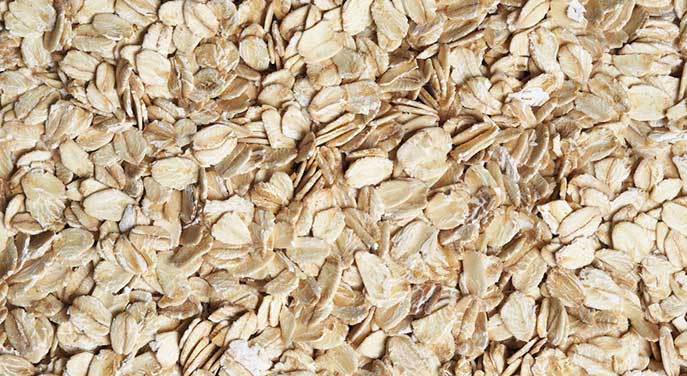Demand for beta glucan fibre has been rising steadily in recent years, as mounting evidence suggests the dietary fibre can help lower cholesterol, reducing the risk of heart disease and control blood sugar levels in people with diabetes.
Best of all, it creates none of the side-effects of drugs and is fully recognized by the U.S. Food and Drug Administration, Health Canada and the European Food Safety Authority.
So you could say Thava Vasanthan was well ahead of the curve when he commercialized a cost-effective process 20 years ago for extracting beta glucan from grains such as barley and oats without using chemicals.
A professor of grain science and technology in the University of Alberta’s Faculty of Agricultural, Life & Environmental Sciences, Vasanthan soon founded a spinoff company called GrainFrac, and in 2014 set up shop in a grain processing plant in Camrose, Alta.
Now the market is finally catching up to Vasanthan’s innovation, as consumers and food companies are attracted to the cost savings of his process and the health benefits of beta glucan.
“It took a while for us to introduce this product into the market,” said Vasanthan, who works in the Department of Agricultural, Food and Nutritional Science. “It was not well known to consumers, so we had to educate the industry to show them the benefits, how they can formulate their food products and put health claims on labels.”
Just last year, Camrose-based manufacturer Sunny Boy Foods began implementing Vasanthan’s beta glucan extraction process – called air currents assisted particle separation (ACAPS) – and is selling the concentrate online and in some grocery stores under the product name Nutrastat.
“We saw that this is basically a slam dunk in terms of being able to provide a product nobody else in the world can offer as cost-effectively,” said Grant Shapka, manager of marketing and sales for Sunny Boy.
“The concentrate was traditionally far too expensive to extract, so ACAPS literally allowed us to become industry leaders in producing beta glucan fibre. … It’s a really easy way to help provide a solution that can make a huge impact on people’s lives.”
The extraction process works by pumping barley into a washing machine-sized cylinder and creating what Shapka calls an “air tornado” inside the cylinder, fracturing the grain.
“We then use various specialized sieves to separate out the components.”
Scientists have long known that beta glucan – present in many plants, including barley, oats, mushrooms and fungal cultures, and yeast – slows rates of starch digestion and glucose absorption into the bloodstream.
That makes it a great health aid for people with diabetes who can’t tolerate a glucose overload, said Vasanthan. It also traps bile acids produced with cholesterol and excretes them, lowering cholesterol levels.
“It’s a highly beneficial compound, but you have to produce it at an affordable cost in order for the food industry to formulate it into a variety of food products,” noted Vasanthan.
For the consumer, the 30 per cent beta glucan concentrate makes it possible to easily ingest enough of it – three grams per day – to derive the benefits.
“If I asked you to eat three bowls of porridge every day to get the health benefits, it would be difficult to motivate you,” said Vasanthan. Adding about three tablespoons to other foods is far more manageable.
Several food companies are ordering GrainFrac’s product, called Cerabeta, to add to their products, such as breads, breakfast cereals, nutrition bars, snack foods, smoothies and even yogurts.
Only two other competitors offer a similar concentrate, he added, but “it is marketed at a very high price.”
GrainFrac is now diversifying its ACAPS technology to refine protein concentrates from pulse and bean grains, he said, as global demand for plant-based protein has grown exponentially over the past three or four years, with most of that growth in North America.
| By Geoff McMaster
Geoff McMaster is a reporter with the University of Alberta’s Folio online magazine. The University of Alberta is a Troy Media Editorial Content Provider Partner.
The opinions expressed by our columnists and contributors are theirs alone and do not inherently or expressly reflect the views of our publication.
© Troy Media
Troy Media is an editorial content provider to media outlets and its own hosted community news outlets across Canada.


